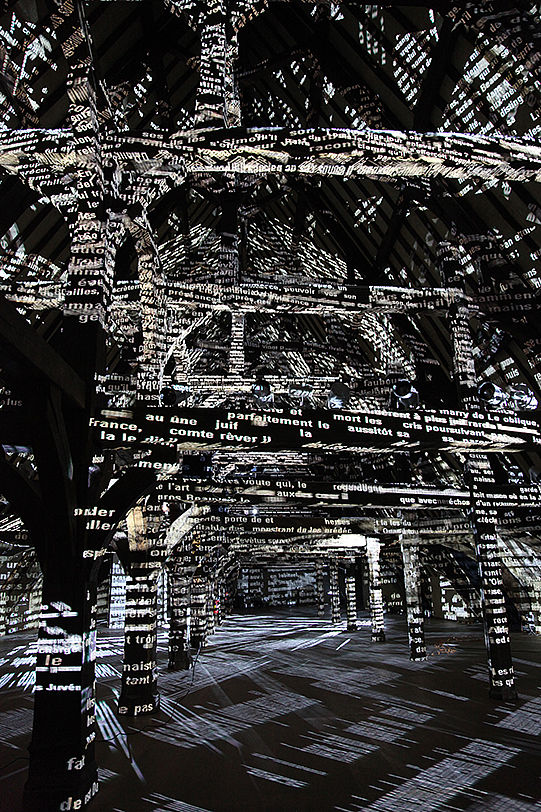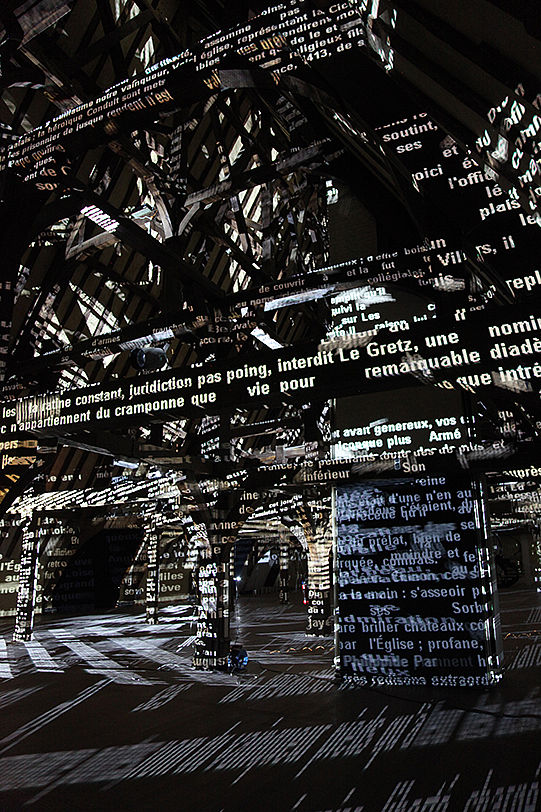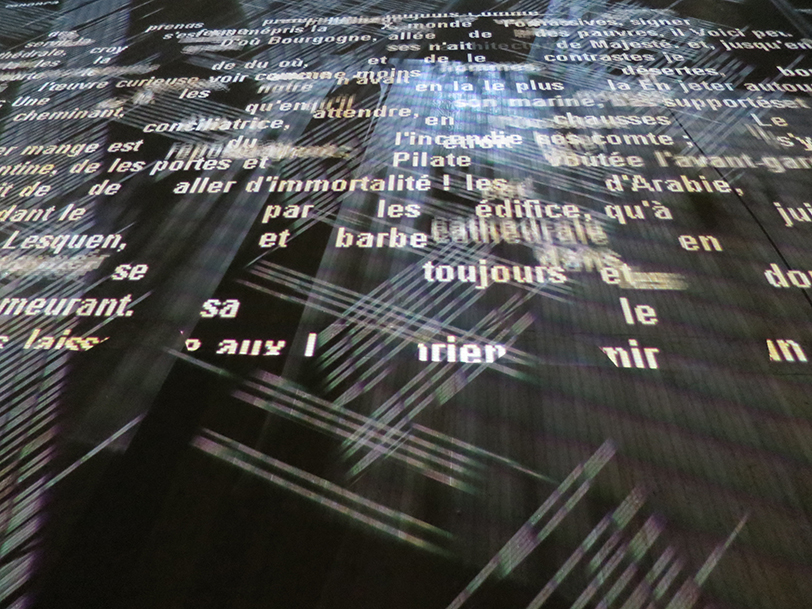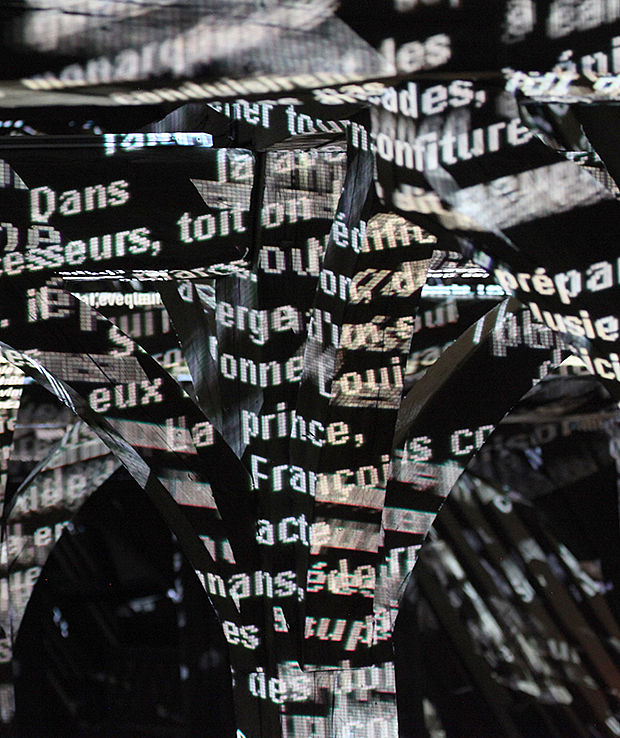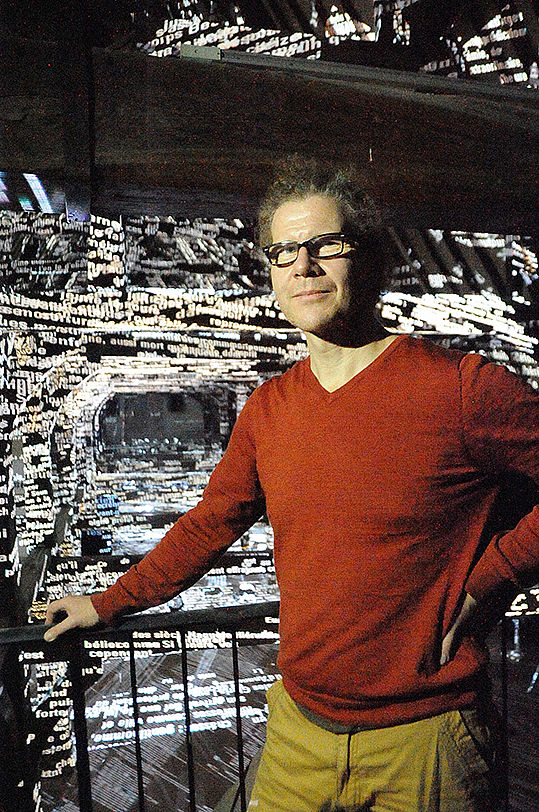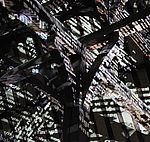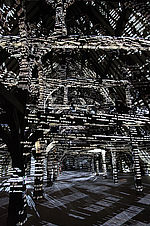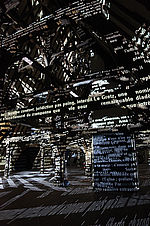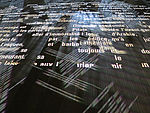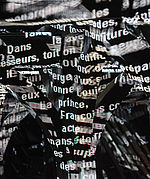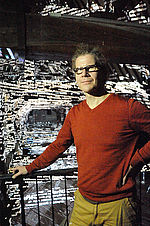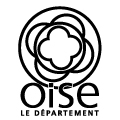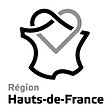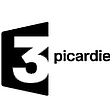After exhibiting in prestigious venues like the Grand Palais, the Musée d’Orsay, the Musée du Quai Branly in Paris or the Moscow Carousel, artist Charles Sandison accepted an invitation from MUDO - Musée de l’Oise. Three years after his first digital installation in France, the artist gives us an extraordinary creation in the impressive space under the museum’s roof structure. For the re-opening of the Renaissance palace, Axis Mundi sheds new light on this emblematic space by reinventing the universal tree linking Heaven and Earth, past and present.
Digital: the artist’s raw material
The artist is known for his computer-generated projections filling a well-structured space. In semi-darkness, Charles Sandison plunges the viewer into a labyrinth of moving, illuminated words. In his work, multimedia is not just a tool; it becomes the subject: far from defining Sandison’s work, technology is merely a means he uses to turn a physical space into a mental space. No doubt if the machine and its mechanisms had not been invented or had not excited the artist, he would have found another medium to express his aesthetic, poetic and conceptual universe.
A Complex Creative Process
In his production phase, the artist attempts, with almost mathematical rigour, to achieve a precise arrangement of his video projectors; he designs a complex computer programme that generates words and determines how they appear, move, collide and disappear. His installations deal mainly with the relationship between text and image, man and machine, signifier and signified. For MUDO-Musée de l’Oise, Charles Sandison selected a specific lexical material as subject matter for his projection: the museum’s inventory of works and many other documents on the palace, such as Les Fortunes et adversitez by Jehan Régnier (1526). These worlds, these words navigating around the roof structure mesmerise visitors the moment they cross the threshold, throwing them into another world where the only landmark is this cathedral of light. Charles Sandison uses words to generate a link between the viewer-reader and his work, between his work and the space it occupies.
A work that resonates with the spirit of the place
In order to sublimate the architecture of the places, Charles Sandison set himself a technical challenge, a projection from the floor to the top of the roof – a height of more than 14 meters – and a conceptual challenge, that of keeping the projected words in sync with the history of the episcopal palace and the museum’s collections. The artist takes possession of the space in all its dimensions, including temporal. In this sense the loft, the hall closest to the sky and dominating the former episcopal palace, becomes a place between two worlds for a dream-like and spiritual, almost mythical, experience.



